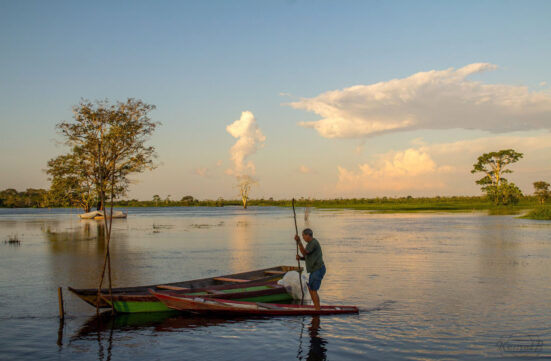Salutogenesis and creative ageing in a vulnerable context

Photo: Life in contact with river water in the city of Itacoatiara, Amazonas state, Brazil.
Copyright: Kemel Jose Fonseca Barbosa
Posted by: Victor José Machado de Oliveira, Inês Amanda Streit
We are happy to share some of the experience initially accumulated on salutogenesis and aging in Brazil. People’s life expectancy is increasing, but this doesn’t mean that they live well and age actively. The salutogenic approach helps us to understand creative ageing in a vulnerable context. When we say “creative ageing”, we’re using a pun. In other words, we understand that the ageing process takes place throughout life and that it is not enough just to be (physically) active, but to be able to create a world to live in [1]. Antonovsky considered that aging is not a process of biological degradation, but of human development [2]. In this sense, we are betting on and observing a power of creation throughout life, mainly made possible by access to health resources.
We conduct research into the life stories of long-lived people (over 80 years old). We recently published an article in which we presented and analyzed the life story of Mr. Moacy (affectionately known as Moa). As a child, he migrated from the Northeast to the state of Amazonas/Brazil, where he has lived ever since. We observed various stressors in his life (e.g., starvation, child labor, accidents, illness, loss of loved ones). However, we also identified strategies for coping with stressors (e.g., social support, access to formal education, inventions to make a world to live in, faith/religion, active participation in the community in cinematographic projects and bodily practices). We concluded that the unique life story shows the development of a strong sense of coherence in aging, evidenced in the ability to manage available resources and in significance as a motivation to continue living creatively [1]. Other life stories of long-lived people are being collected and analyzed for future publications.
Our research experience has shown that salutogenesis is a powerful theory for thinking about health promotion. However, we have observed something that seems to be peculiar to the experiences of the Global South. Our reflections based on critical theories (for example, Paulo Freire’s pedagogy of the oppressed) lead us to understand that coping with stressors is not just about what people do to produce health (salutogenesis). These processes reveal the social inequalities that generate the states of tension and illness of the most vulnerable people. From a Global South perspective, we understand that salutogenesis is more than just a theory of health promotion. Salutogenesis is a theory of what we should do to change the perverse conditions of life so that people can create a more dignified and healthy way of existing [3].
References
[1] Heufemann, N. S. C. et al. (2024). Active ageing in a vulnerable context: Moa’s life story from a salutogenic perspective. Estudos interdisciplinares sobre o Envelhecimento, 29, e132079. https://seer.ufrgs.br/index.php/RevEnvelhecer/article/view/132079/91989.
[2] Antonovsky, A. (1993). The salutogenic approach to aging. A lecture held in Berkeley, 21 January 1993. Retrieved 24 Feb 2015, from http://www.angelbre.com/ok/soc/a-berkeley.html.
[3] Reflections on the development of a scientific initiation project: “The uses of salutogenesis theory in physical education and its interfaces with physical activities and body practices: a scoping review”. Partnership between the Federal University of Amazonas and the Federal University of Sergipe (Brazil) developed between 2021-2022.